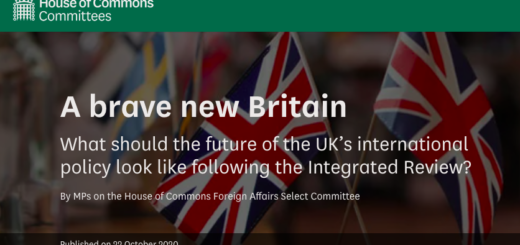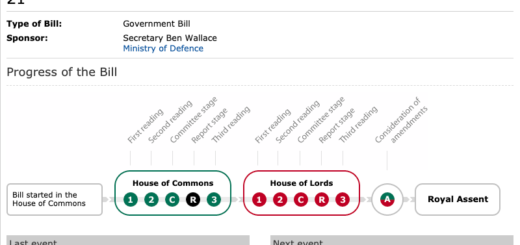Nick Pickles, Director of Big Brother Watch and Sam Smith, Technologist at Privacy International were invited to speak to the APPG on the question, Challenging Privacy? The civil use of drones in the UK. John Hemming MP chaired the meeting. He began by explaining the background to the meeting. Unmanned aerial vehicles, or drones, can provide a range of cost-effective solutions in areas such as environmental surveillance, policing, border security, to name but a few. But these civil applications have been accompanied by concerns about the impact of drones on privacy and questions raised about the regulatory framework which governs the civil use of this technology.
John Hemming then introduced Nick Pickles of Big Brother Watch, an organisation created to challenge policies that threaten our privacy, our freedoms and our civil liberties, and to expose the true scale of the surveillance state. Nick Pickles is a Law graduate of the University of Durham. He joined Big Brother Watch as Director in September 2011, with a background in corporate public relations and technology. Before joining Big Brother Watch he worked with small SMEs and multinational companies in corporate communications. Since joining Big Brother Watch he has become one of the UK’s leading voices on privacy and civil liberties and gave oral evidence to the Joint Committee on the Draft Communications Data Bill.
The primary focus of Nick’s comments were the gaps in regulation governing the civil use of drones by public authorities. He began by discussing the regulations as set out by the Civil Aviation Authority, which are based on model aircraft. This regime doesn’t currently cover aircraft weighing less than 20kg, which also do not require airworthiness approval, registration and only requires operating permission if it used for aerial work purposes or if it is flown close to people and property. Surveillance directed at an individual, or which is covert in nature, is covered by the Regulation of Investigatory Powers Act (RIPA). Currently the application of the legal framework which governs CCTV camera use is considered by Government to be sufficient for overt use.
However, he flagged the point that there is now, increasingly available to the general public, advanced technology which enables more extensive public surveillance. He cited the example of a drone, armed with a camera, able to fly up and down the gardens of an ordinary suburban street. What regulation would govern this use? Who would the public call to report this? The answer is the Information Commissioner who deals with breaches of the Data Protection Act, but how many ordinary people would be aware of this office? Further, private surveillance cameras are exempt from the Data Protection Act. Questions also arose as to who was flying the drones and where the images were being stored. For CTTV, there is the requirement that the public be given notice that a camera was in use; this could not be the case with a drone.
Nick highlighted the flaws in the applicable regulations: one set of regulations applied to the physical flying of the drone and the other set of regulations to the payload. However, there was nothing which combined the two regimes to address the particular setup of a drone; it was this absence of tailored regulations which was, in his view, problematic. He drew attention to the use of drones by Texan border police, which are now able to fire bean bags at suspects. The ability to attach a range of complex technology to a drone was significant, from non-lethal crowd control methods to thermal imaging equipment. He advocated the need to update the Data Protection Act as method of addressing the proliferation and increased use of this technology. He pointed to the paucity of section 55 of the Data Protection Act which was concerned with the unauthorised collection of data but noted that this was rarely used by the authorities and did not carry a custodial sentence. Nick indicated that there were relatively clear laws around the use of information gathered via such methods and their ability to be used in court, for example. However, in contrast, private use remained unregulated and thus open to abuse.
John Hemming then introduced Sam Smith from Privacy International (PI); their mission is to defend the right to privacy across the world, and to fight surveillance and other intrusions into private life by governments and corporations. Sam Smith’s work focuses on using the internet for civic good, and he has been advising PI since January 2012. He has worked on a range of human rights technology projects, building search engines about violence in Chechnya, wrangling data about political violence in Zimbabwe, and making research about modern slavery more accessible.
Sam began his presentation by pointing out that there are many uses for drones and highlighted the potential for them to be used as a method for stalking people. The examples of drone use were ones that could be as small as a mobile phone being used by fire services; drones could go into dangerous situations, such as buildings that are on fire, and check for trapped people or structural damage. In doing so it would prevent the fire service needing to risk someone’s life by sending them into a dangerous situation. He also suggested use by organisations such as Ordnance Survey, who may wish to use drones to observe coastal erosion. However he went on to point out that despite drones being deployed with good intention, they can still cause issues. He used a hypothetical example of if a drone was deployed to keep the peace at a protest in Northern Ireland. Depending on who the drone was deployed by it could cause friction within other sectors of the community. Was the use of a drone better than a helicopter? Or was it significant that you could hear the helicopter but not hear the drone? In the case of coastal erosion, where they took images of people sunbathing at a beach, were privacy issues raised? Did the public perceive there to be a difference between a drone used by the media and by the BBC? Sam discussed the issue of whether it mattered whose name the drone was operating under. If two drones have been rented from the same company, does the ‘sticker on the side’ matter to what rules the drone are subject to or should it be governed by the owner of the drone. He noted that the rules which applied to CCTV were also applied to drones; some of these rules working and others didn’t.
Sam highlighted the recent media coverage of the Yo Sushi drone which was being used to deliver food. However, he noted the tensions between those using drones and those who were the focus of the surveillance; citing the example of the recent use by the League against Cruel Sports, where hunt supporters are believed to have shot down a drone sent up by the League to monitor a hunt, (see, for similar tensions on use in this context in the US, http://gizmodo.com/5886013/hunters-shoot-animal-rights-drone-out-of-the-sky). A more worrying use of drones was as communications and signal interceptors. Anything, within a reasonable weight range, could be fitted to a drone. Nick noted the use of infra-red cameras, which could monitor how many people lived in a house, for example. By highlighting the range of equipment which could be attached to drones, they both showed both the gap in regulation and the potential problems which subsequently arose for the protection of privacy.
John Hemming then opened the floor to questions. A Parliamentarian began by making the point of a need for greater clarity about the purpose of the Group. Attention was drawn to the difference between military use, and the subsequent reduction in harm to British troops, and the cases highlighted in the meeting of civil spying equipment. He voiced concern at the use of the term “drone” which he argued had the potential to confuse the debate. He explained the name drone invoked images of the large scale UAVs operated by the military and using the term drone on smaller UAVs muddied the debate. He also asked if the APPG, as well as the organisations represented by the two speakers, had a co-ordinated approach to engaging with the Home Office and the Ministry of Defence. John Hemming responded by explaining how the Group worked and the focus the Group had on the principle that there had been a fundamental change to the technological environment but that the legal framework had not yet caught up. This applied to both the military and civil use of this technology.
Nick noted there was no co-ordinated approach to the issue amongst Government Departments. For example, drones were covered by the Civil Aviation Authority, and thus fell under the auspices of the Department for Transport; but the monitoring of the use of RIPA, fell under the Home Office; and the use of cameras for surveillance, fell under the Security Authority while the Ministry of Justice was concerned with the use of the Data Protection Act. He argued for the need for politicians to bring these various departments and functions into one point. Sam also responded that though this session was concerned with civil use, there was significant cross over between civilian reuse of military technology development of drones.
A comment was made, reflecting the international armed use of drones,that this technology now sat within the remit of the Arms Trade Treaty. Concern was raised by a member of civil society as to the potential for increased use of drones by media, which would potentially be highly intrusive. Further, the data collected could be used for marketing professionals. For example, a drone is flown over the gardens of a particular neighbourhood on behalf of a garden centre so they are able to better target their services. How could individuals protect their privacy?
The use of Section 55 of the Data Protection Act was raised with a question as to how effective it was in deterring civil drone use from recording people without permission. Nick claimed it was not strong enough on the issue of drones, as fines for inappropriate use of information were very low and it was very rarely used. Also information obtained from a drone is still admissible as evidence in a court as well as to government departments such as the Home Office. He used the example of a citizen providing a local council with data on house occupancy obtained from an infrared camera – for the purposes of cross-referencing it with information held on council tax payments. Only if the data collection was carried out by a government department would the data fall under RIPA.
A question was raised as to the potential for the civil use of drones across borders. Nick responded that currently there was not the capacity to use this technology for more than an hour or so and thus there was not the yet the potential for them to cross the English Channel. However, the civil society representative highlighted their potential use in international waters, say by Greenpeace, and potential disputes that could arise in this context.
In response to a question, Sam raised a problem with potentially legislating against drones - the technology is constantly developing at a rapid pace and legislation could become out of date quickly. The current legislation requires civilian drones to be kept in the line of sight of the operator but this could be changed in the future. He also put forward the idea of how different the current situation would be if such a requirement was applied to military use. Nick pointed out that part of the problem was that people who wished to undertake covert illegal surveillance would not fill out the relevant form and register their activities.
In response to a question about the relationship between the guidance for CCTV and its applicability to drones, Sam noted that although the regime was imperfect, the line of sight criteria meant at least that people could see the drone being used for now. Nick pointed out another issue with policing drones is that the new CCTV Commissioner does not have substantive powers and the position needs to be strengthened. He noted that currently there was no mechanism to complain about the private use of CCTV as this was not covered by the Commissioner. John Hemming noted that at least in the case of private CCTV cameras, one has to own the land where the CCTV camera is situated – this is not the case with a drone.
After thanking the speakers and participants, the meeting was closed by John Hemming.
Unmanned Aerial Vehicles briefing (Big Brother Watch)




